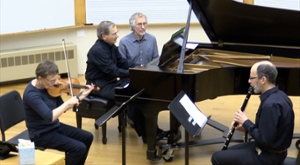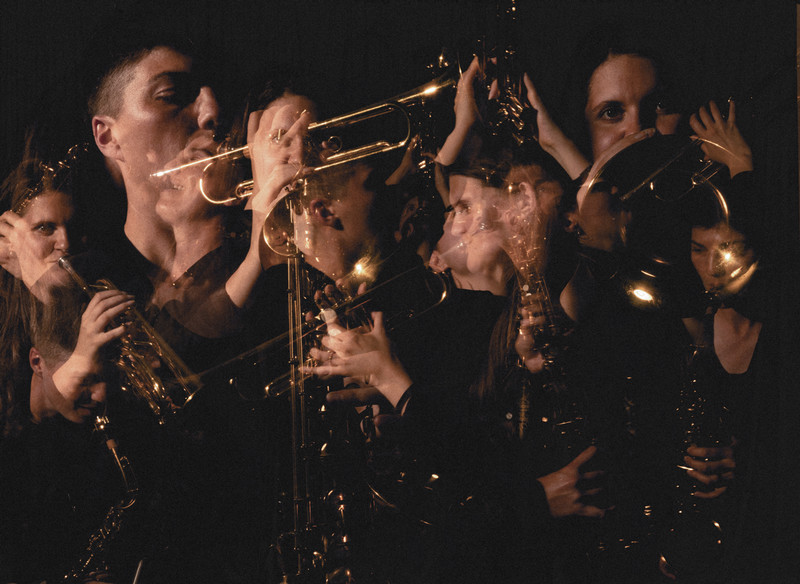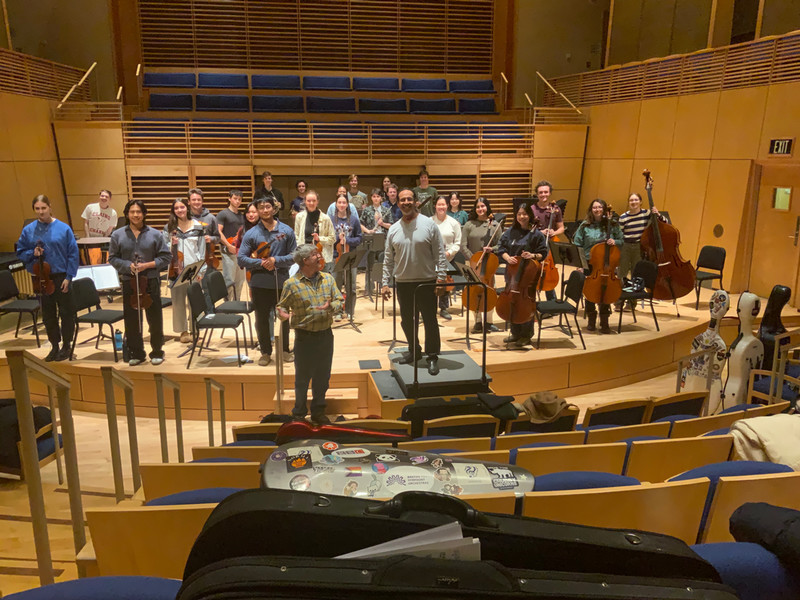Channeling the Bauhaus through Music
By Tom Porter“Music was never taught at the Bauhaus,” explains senior music lecturer Frank Mauceri to the audience in Gibson Hall’s Tillotson Room. Nevertheless, he explains, a number of the early twentieth century’s most notable European composers were intimately familiar with the artistic movement and were friends with several of the school’s practitioners.
Overture from Kurt Weill’s Threepenny Opera.
Mauceri was introducing an evening of music, presented in early April by the Bowdoin College Museum of Art to complement the exhibition Modernism for All: The Bauhaus at 100, on display in the Shaw Ruddock Gallery until May 12, 2019.
The dedication of the Bauhaus movement to contemporary music was underlined in 1923, when the school organized a week-long celebration of new music (“Fest Neuer Musik”), featuring the work of Igor Stravinsky and Paul Hindemith, both of whom attended the event. Also present were Kurt Weill and Stefan Wolpe, music students who would go on to become prominent composers.
Works by all these composers were featured in the concert, which began with music from Kurt Weill’s Threepenny Opera (written with lyricist Bertolt Brecht). This was performed by a saxophone quartet led by Mauceri and featuring Noah Eckstein ’21 on alto sax, Dylan Hayton-Ruffner ’20 on tenor sax, and Danny Little ’22 on baritone sax.
Guest performer Gulimina Mahamuti played selections from Six Piano Pieces by Stefan Wolpe (who, incidentally, also studied art under the noted Bauhaus exponent Paul Klee at one point!) Mahamuti was joined by soprano Victoria Wu ’19 for selections from Paul Hindeminth’s song-cycle Marienleben.
The concert was rounded off with The Soldier’s Tale by Igor Stravinsky, featuring theater professor Abigail Killeen as narrator. She was joined by A. LeRoy Greason Professor of Music Emerita Mary Hunter on violin, physics professor Mark Battle on clarinet, and professor of music emeritus at Bates College James Parakilas on piano.




